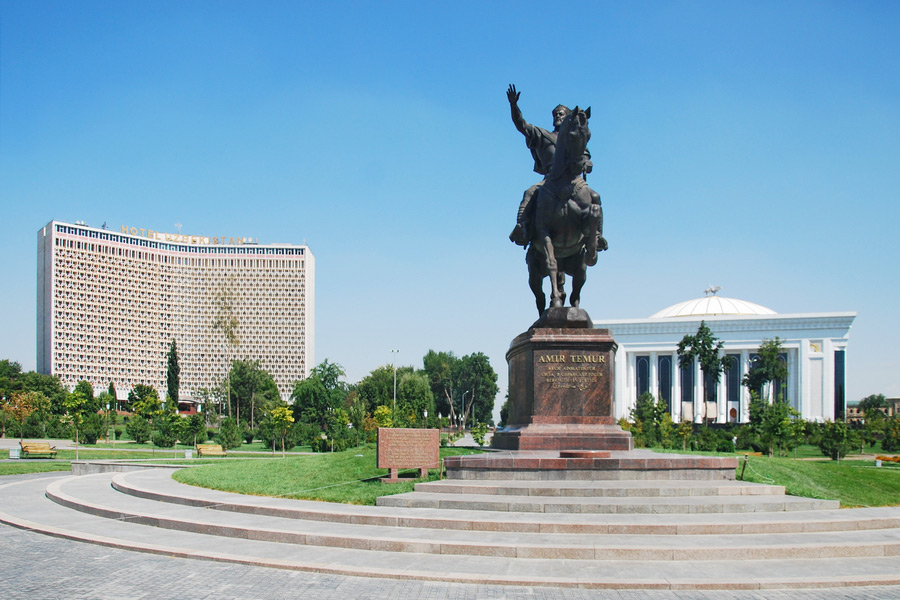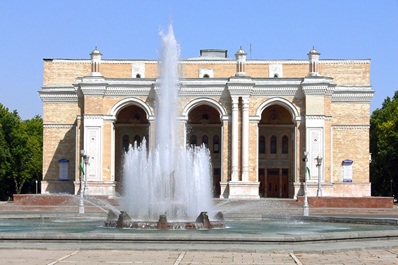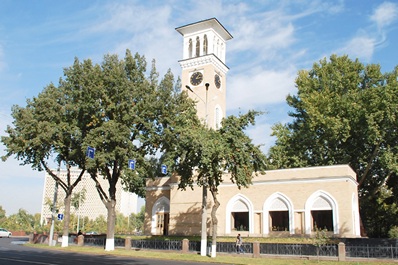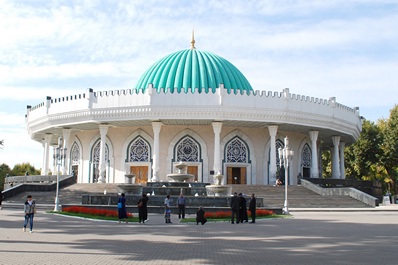Things to Do and Sightseeing Tours in Tashkent
Tashkent is the capital of Uzbekistan and is a metropolis of over 2.5 million people. The city is set out as a grid of straight, wide streets and avenues, interspersed with many green areas (parks, squares, and gardens) and fountains.
This marvelous city embodies the modern elegance of many other capitals of the world; at the same time, as an eastern city, Tashkent has its own unique flavour. It tastefully combines medieval buildings that look like they’re from the pages of ancient oriental tales, with elegant European architecture from the time of the Turkestan governorship, concrete ‘blocks’ from the Soviet era and, finally, sparkling high-rise commercial buildings made of glass and concrete that represent a new era of independent Uzbekistan.
Tashkent Tours
Tashkent tours immerse visitors in a unique blend of modern cityscape and timeless history, reflecting the resilience and dynamism of Uzbekistan's capital city. From the iconic Chorsu Bazaar to the awe-inspiring Hazrat Imam complex, these tours provide an unrivaled insight into the city's thriving culture, diverse architecture, and remarkable past.
Enhance your tour experience by taking the time to acquaint yourself with Tashkent's multifaceted history and lively local culture beforehand.
History of Tashkent
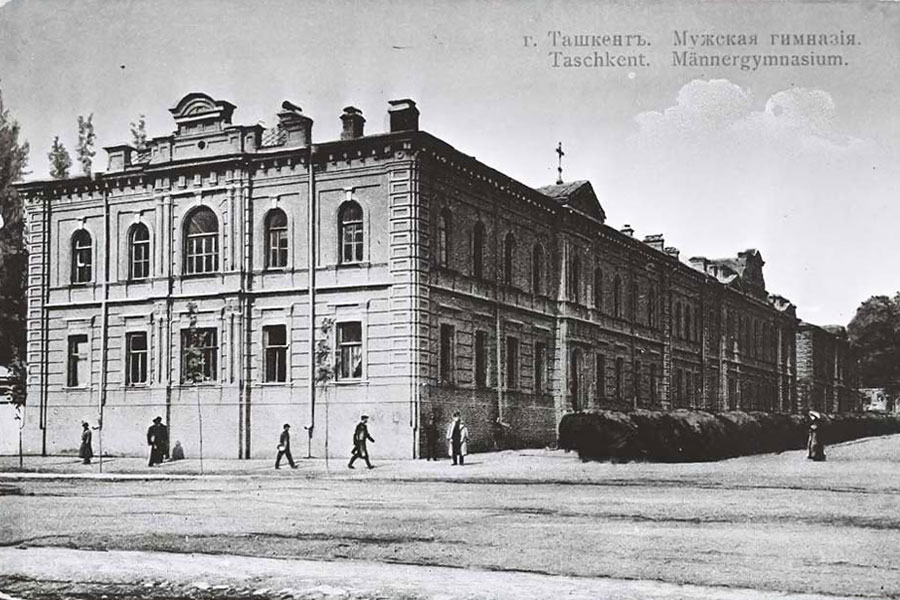
Tashkent is one of the oldest cities on the Great Silk Road between China and Europe. The earliest references to Tashkent as a city settlement appeared in written sources in the 2nd century BC. In the Chinese annals the city is called Yueni or Shi; in the records of the Persian king, Shampur, it appears as Chach; and in other Arabic sources, Shash. The name Tashkent first appeared in Turkish documents of the 9th to 12th centuries.
From ancient times, a favourable geographical position and mild climate made Tashkent one of the main Silk Road cities. In the 14–15th centuries it was the part of the Timurid Empire, and in the 16th century it was under the control of the Sheibanids dynasty. In 1865, after the conquest of Mikhail Chernyaev, Russian military leader, the city became under the rule of the Russian Empire and Russian government was established here. In 1930 Tashkent was declared the capital of Uzbekistan, former Uzbek SSR.
Things to Do in Tashkent
Landmarks and Attractions in Tashkent

Many of Tashkent’s tourist landmarks and attractions are concentrated in the Old City, which is one of the few districts that has preserved its traditional culture in the rapidly-changing metropolis. The spirit of old Tashkent lives here, in the cozy courtyards of the hospitable mahallahs, the bustling Chorsu Bazaar, and the blue domes of the Khast Imam complex. In this part of the city there are artisans, teahouses, and bakeries.
Other Tashkent attractions worth visiting include the Tashkent TV Tower, the German Church, the Polish Church, Amir Temur Square with the famous Tashkent astronomical clock, Independence Square, and the former residence of Prince Romanov, which was designed by architects Benoit and Heinzelmann.
Tashkent also boasts the first metro system in Central Asia. The Tashkent metro is not only a fast, affordable, and comfortable way to move around the city, but also an architectural monument. Each of the 50 stations has an original design - such as the Cosmonauts station, designed in a space theme, to the Alisher Navoi station with its walls artfully decorated with stories and characters from the works of the poet.
The Zangiata Mausoleum, where one of the Muslim saints, Sheikh Ai-Khoja, and his wife, Ambar Bibi, are buried, is located 15 kilometres from Tashkent. This is one of the religious sites visited most frequently by residents of and visitors to Tashkent.
Tashkent Museums

As Uzbekistan’s capital, Tashkent is also the country’s cultural centre. It boasts many interesting museums and exhibition halls with a variety of collections and expositions.
The exhibits of the State Museum of History trace Uzbekistan’s history from the early Paleolithic period to the present day. The Museum of Applied Art showcases an impressive collection of Uzbek carpets, ceramics, textiles, and other handicrafts. The State Museum of Art, the Amir Timur Museum, and the Tashkent Museum of Railway Equipment also offer interesting collections. In the Polytechnical Museum, visitors will find displays on automotive history, and many unusual interactive exhibits. Lovers of literature will be interested in the house-museums of Sergei Yesenin and Anna Akhmatova.
Tashkent Theatres

A highlight of Tashkent’s cultural life is the Ilkhom Theatre, which is known for experimental performances and its unusual interpretations of classical works. This theatre also hosts concerts, exhibitions of young artists, and festivals, the most famous of which is the Ilkhom Rock Fest. The State Academic Bolshoi Theatre named after Alisher Navoi, and the Academic Russian Drama Theatre, host more traditional productions of ballets, operas, and music. Tashkent, like many other Uzbek cities, also has a strong tradition of puppet shows. Performances are held at the Silk Road Marionettes Theatre and the Republican Puppet Theatre.
Entertainment, Parks, and Shopping in Tashkent
Entertainment in Tashkent is diverse, with something to suit everyone.
Parks of Tashkent
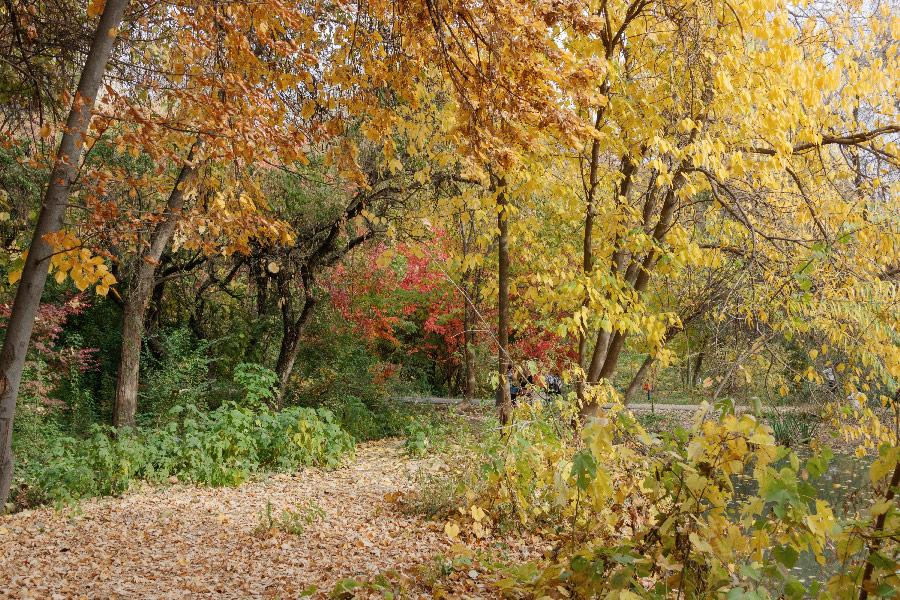
Walkers will love Tashkent’s parks, which are particularly beautiful in spring, early summer, and autumn.
Ecopark was the first park in Tashkent to embody the principles of “green” construction in its layout and architecture. There are no fairground rides, but visitors can avoid the hustle and bustle of the city as they walk along neat paths, picnic on the grass, or do yoga.
The refurbished Central Park (formerly Telman Park) offers shady alleys with benches, and modern European attractions for children and adults - including the first authentic French carousel in Uzbekistan. Central Park regularly holds free public festivals and other events.
Ankhor Lokomotiv Park boasts the highest ferris wheel in Uzbekistan, which offers a breathtaking view of the capital.
Shopping in Tashkent
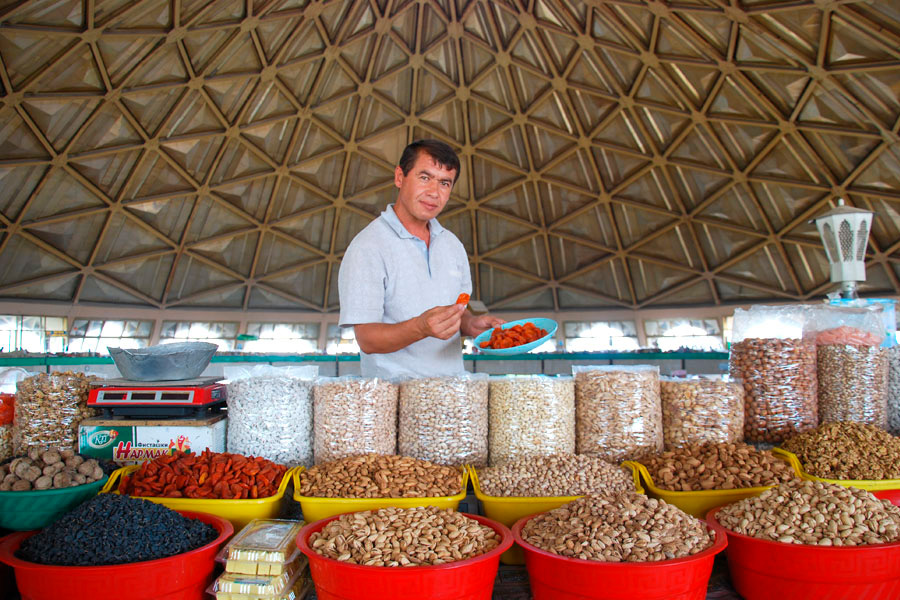
To combine shopping and entertainment, visit the Samarkand Darvaza, Mega Planet, Next, Parus, and Compass shopping and entertainment centres. These offer modern facilities including food courts, cinemas, children’s play areas, and many shops selling international brands.
The charm of shopping oriental style—with friendly sellers and stalls laden with fresh vegetables and fruits, fragrant spices, hot lepeshka (non) bread, and all kinds of goods—lives in Tashkent’s vibrant bazaars. Chorsu and Alay Bazaars are the most popular among tourists.
Food in Tashkent
Tashkent’s numerous cafes and restaurants offer a wide range of cuisines including European, Russian, Asian (such as Korean, Chinese, and Indian), Middle Eastern, Caucasian, and, of course, Uzbek.
Uzbek Cuisine
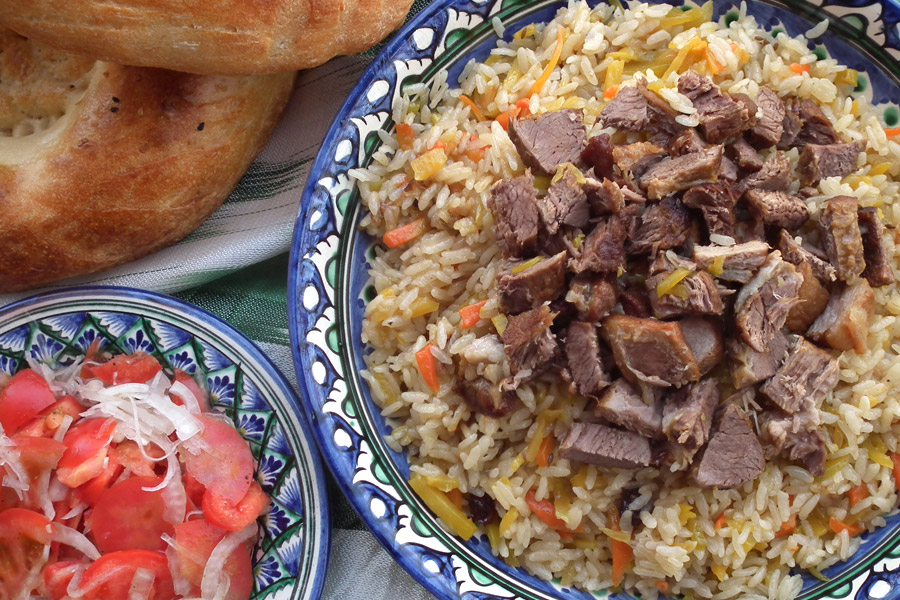
On almost every street there are teahouses and cafes (“Milliy Taomlar”, which means “national dishes” in Uzbek) serving traditional dishes like shashlik, shawarma, samsa, plov, naryn, manti, lagman, and shurpa. These venues offer high-quality, delicious, local foods at reasonable prices.
At the Chorsu Bazaar are another gastronomic highlight on the map of Tashkent: many food stalls serving all the famous Uzbek dishes at very low prices.
The most delicious plov (pilaf) in Tashkent is served at the Central Asian Plov Centre (Osh Markazi). People from all over the city come here to eat, and in just a couple of hours the huge cauldrons become empty.
Vegetarian Restaurants
Tashkent does not have any dedicated vegetarian restaurants, but several restaurants serve vegetarian dishes such as delicious salads, vegetable dumplings, samsa, pizza, and pasta.
Coffee Houses, Bakeries, and Patisseries
Recently, Tashkent has become a very comfortable city for coffee lovers: there are now many western-style coffee shops in the capital. Café-bakeries where customers can buy freshly-baked bread, baguettes, croissants, cakes, and pastries, are also flourishing.
City Transport in Tashkent
To help reduce environmental impact, we recommend choosing environmentally friendly public transportation options, which are widely available in Tashkent. Public transit operates from 6:00 AM to 11:00 PM with intervals of 10-20 minutes. Fares can be paid with cash, a local transportation card, or an international card (Visa, Mastercard), costing 2,000 soums (about $0.16) per person per trip.
Public Transport
Public transportation in Tashkent primarily consists of buses and minibuses, offering the most affordable and widely accessible way to navigate the city, with routes covering nearly all areas of the capital. The "Yandex Go", "Fasten", "MyTaxi" or "Uklon" apps allow you to conveniently track bus movements in real-time.
Metro

Tashkent’s metro system remains a quick, affordable, and convenient mode of transportation. The network has expanded in recent years, but it still primarily serves the central parts of the city. During peak hours, trains run every 2-3 minutes, while in the evenings, the intervals extend to about 10-15 minutes.
Taxis
Taxis are a popular option for getting around Tashkent, and smartphone apps make it easy to call a ride. Services like Yandex Go, My Taxi, Uklon, and Fasten are available, and some offer an eco-friendly option, allowing you to request an electric car.
Car Rental
Car rental services exist in Tashkent. Cars should be ordered at least a day in advance. It is advisable to book further in advance during the peak tourist season, when there may be a shortage of cars.
If you want to rent a car in Tashkent, you can book through our trusted partner, Hertz, for top-notch local car rental services.
Other Modes of Transport
Bicycle rentals are available in Tashkent, though the bike path system is still under development. Alternatively, renting an electric scooter provides a convenient and accessible way to get around the city.
How to Get to Tashkent

Flying is the most convenient way to get to Tashkent from other countries. The city is served by several international airlines, such as Aeroflot, Air Astana, Asiana Airlines, China Southern Airlines, Korean Airlines, Nordwind Airlines, Somon Air, and Turkish Airlines. The national airline, Uzbekistan Airways, offers regular flights to many European, Asian, and North American cities including Bangkok, Beijing, Delhi, Frankfurt, Istanbul, Kuala Lumpur, London, New York, Paris, Seoul, and Tel Aviv. It also flies to many CIS countries, as well as within Uzbekistan.
Although most international visitors arrive by air, Tashkent can also be reached by train from Russia or Kazakhstan. Trains are mainly used for travel within Uzbekistan, with regular trains between Tashkent and Samarkand, Bukhara, Urgench, Nukus, and other cities.
Languages Spoken in Tashkent
Uzbekistan’s national language is Uzbek, with Russian used in Tashkent for international communication. Maps, tourist information, restaurant menus, and signs in Tashkent are mainly in Russian, and guides in museums are Russian-speaking.
English is not as common as Russian, although more and more people, especially young people, are learning it. Most hotels, restaurants, and other tourist sites in Tashkent have someone who can speak at least basic English.
Currency in Tashkent
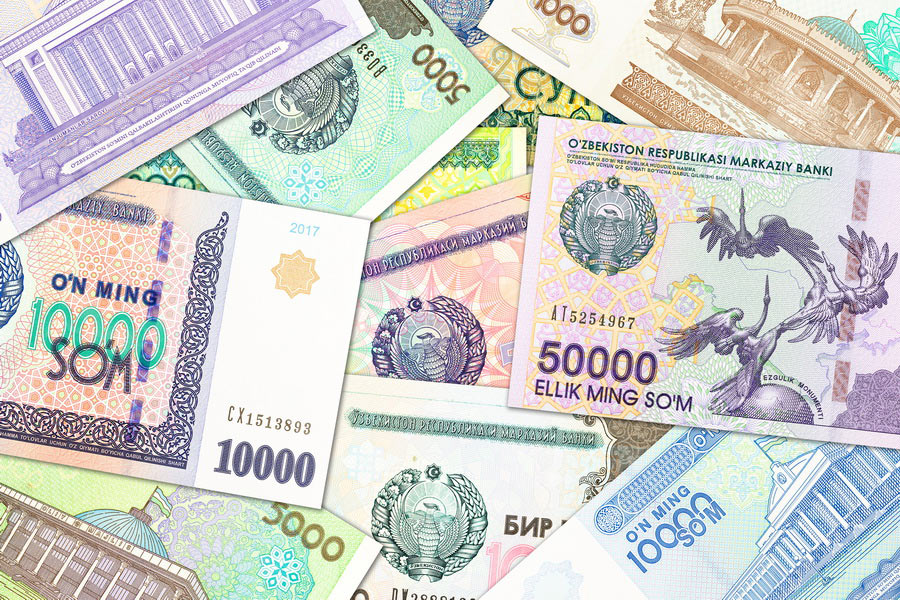
The main currency used in Tashkent is the Uzbek som. The most popular foreign currency is the US dollar, and the second most popular is the euro. The Russian ruble is less widely-used and may suffer from a poor exchange rate.
Foreign exchange bureaus operate at hotels, as well as in all banks. Many ATMs accept Visa and Mastercard.
Security in Tashkent
Tashkent is a peaceful, welcoming, and safe city for travelling alone, as well as for family or group holidays. Nevertheless, all visitors should take standard security precautions and avoid leaving belongings unattended.
In busy public areas, such as metro stations, parks, shopping centres, and bazaars, there are many law enforcement officers. Be prepared to be stopped by police on the street and asked for your passport and registration documents (although such requests are now less frequent than they used to be).


